Imagine experiencing the utmost peace and calming of your senses while you are being struck by the surreal beauty of a place set against the backdrop of the snow-clad Himalayas, the Dhauladhars. This feeling is how I felt when I visited the Gyuto monastery in Dharamshala for the first time.
I went there with an open outlook about Buddhist culture, knowing close to nothing about it and came back with a mind full of new learnings. In today’s article, I will share with you all about monasteries in Dharamshala or Mcleod Ganj region.

I will cover, why you should visit them, what you should expect and do’s & don’ts of visiting monasteries. I am sure it will help you with your visit to Dharamshala or Mcleod Ganj and getting introduced to one of the most enchanting and soothing cultures on the earth, called Buddhism 🙂 🙂 …
Download your FREE high-resolution version pdf copy of this detailed travel guide of Dharamshala & Mcleodganj infographic guide. If, you liked it and found it helpful, please feel free to share it with your family and friends to help them too.
Let's quickly dive into the details:
Why you should visit Monasteries in Dharamshala
There is a reason why Dharamshala is famous for its monasteries. The place has the grandest and picturesque monasteries in India that have preserved the Buddhist and Tibetan culture after the Dalai Lama’s exile from Tibet.
While there are other famous tourist attractions such as the Dharamshala cricket stadium, tea gardens, Kangra fort and rock temples of Masroor (more on these in my series of articles coming up soon) in and around Dharamshala, one can certainly not miss visiting the monasteries in Dharamshala.
I would urge even the most unreligious souls to visit them for the aesthetic and cultural experience that they provide. So, let’s look at them one by one, and maybe you get instigated to visit one of them on your upcoming trip to Dharamshala.
Trip Suggestion: Check out our comprehensive guide on How to plan a trip to Triund trek over weekend?
How to Reach Dharamshala and Get Around the Town
Although I will cover this topic in detail in my upcoming article on Dharamshala Travel Guide, I feel you should at least know how to reach Dharamshala and get around the town. Dharamshala is well connected via road, air, and train to Delhi and other major cities in India. Gaggal airport is around 13 km away from the main town.
Or one can choose to fly to Chandigarh, which is 245 km away and then take a bus or taxi. This option is good for people who are not traveling from Delhi. Pathankot is the nearest train station, which is approximately 87 km from Dharamshala. The drive from Pathankot is quite scenic, and one can enjoy the view of tea gardens at lower Dharamshala too.
From Delhi, overnight buses ply to Dharamshala, which offers a comfortable ride to the place. Fares for luxury Volvo can be anything between 1000 to 1300 rs per seat, one way.
Dharamshala is roughly divided into four areas – Upper Dharamshala (Mcleod Ganj), Lower Dharamshala, Bhagsu, and Dharamkot. Each of these areas has its attractions and unique things. Again, I will elaborate more on those in my subsequent articles, so you have the reason to stay tuned to this series on Dhauladhars !! 🙂
How to Get Around in Dharamshala
Walk – If you choose to walk, like me, it is not a very big town. You can actually appreciate its beauty more if you walk around. However, there are public buses and auto-rickshaws plying that will take you around Dharamshala and Mcleodganj.
Taxis are easily available too, which will cost around 700 INR for a half-day trip. You can refer to the driver list at the thread List of Taxi Drivers for Spiti Valley & Kinnaur Valley.
You should always carry your own water bottle and refill it as many times as you need water. It will not only keep you hydrated always, but you will also help in saving the Himalayas from plastic garbage. Remember, every tiny step counts and your step in this direction can help save the Himalayas too !! 🙂 🙂
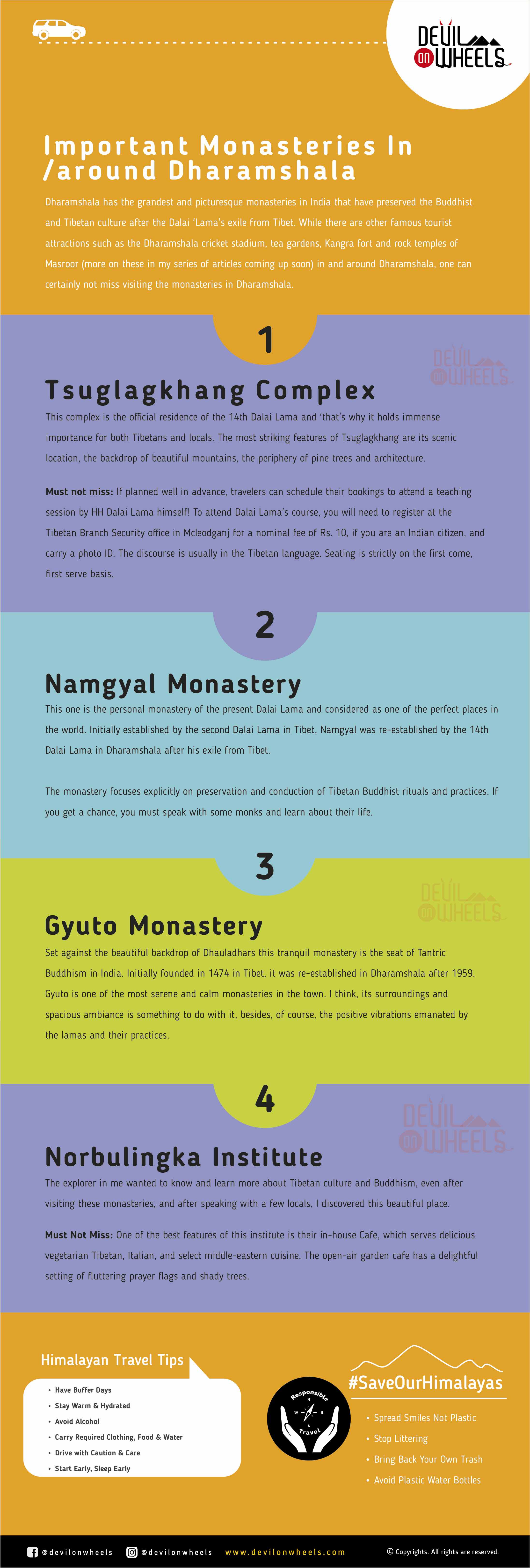
Download your FREE high-resolution version pdf copy of this infographic guide about the list of impressive monasteries in Dharamshala. If, you liked it and found it helpful, please feel free to share it with your family and friends to help them too.
Four Most Impressive Monasteries and Tibetan Culture Centers in Dharamshala
As the place is the headquarter for the Tibetan government in exile, it is dotted with several temples, monasteries, and schools promoting Buddhist and Tibetan culture. I recommend visiting these four monasteries/ establishments located in Dharamshala and Mcleodganj (Upper Dharamshala) if one wants to see the best of Buddhist culture.
Tsuglagkhang Complex
This is the official residence of the 14th Dalai Lama, and that’s why it holds immense importance for both Tibetans and locals. The most striking features of Tsuglagkhang are its scenic location, the backdrop of beautiful mountains, the periphery of pine trees and architecture.
Location
The complex is commonly known as ‘The main Tibetan temple’, situated on the Temple Road in Mcleodganj.
Must Not Miss
If planned well in advance, travelers can schedule their bookings to attend a teaching session by HH Dalai Lama himself! Here is the link to his schedule. To attend Dalai Lama’s session you will need to register at the Tibetan Branch Security Office in Mcleodganj for a nominal fee of Rs. 10, if you are an Indian citizen, and carry a photo ID.
The discourse is usually in Tibetan language, so you will either need a translator sitting next to you or the translated version is provided via FM radio, you need to carry one. Seating is strictly on the first-come, first-serve basis. The process is mostly hassle-free. Detailed guidelines for attending Dalai Lama’s session are available on his official website.
Other Things to do
In case your visit does not coincide with Dalai Lama’s sessions, you may still soak in the serenity offered by the place, interact with the monks, and learn about their culture. The fluttering prayer flags have a unique sound and make you feel good by its aura. A simple ceremonial walk around the complex would give you insights about the uncomplicated lifestyle of the Dalai Lama.
Namgyal Monastery
This one is the personal monastery of the present Dalai Lama and considered as one of the perfect places in the world. Originally established by the second Dalai Lama in Tibet, Namgyal was re-established by the 14th Dalai Lama in Dharamshala after his exile from Tibet.
Location
It is located near Dalai Lama’s residence in the hill town.
Appreciate the architecture
The monastery specifically focuses on the preservation and conduction of Tibetan Buddhist rituals and practices. As you enter the main praying hall, you will be struck by the grandeur of the Buddha statue and beautifully painted walls depicting the stories and teachings of Buddha.
When I visited the place for the first time, it was time for evening prayers of monks. Their chants had a bearing on my mind. It made me stay there for the rest of the evening and interact with them. If you get a chance, you must speak with some monks and learn about their life.

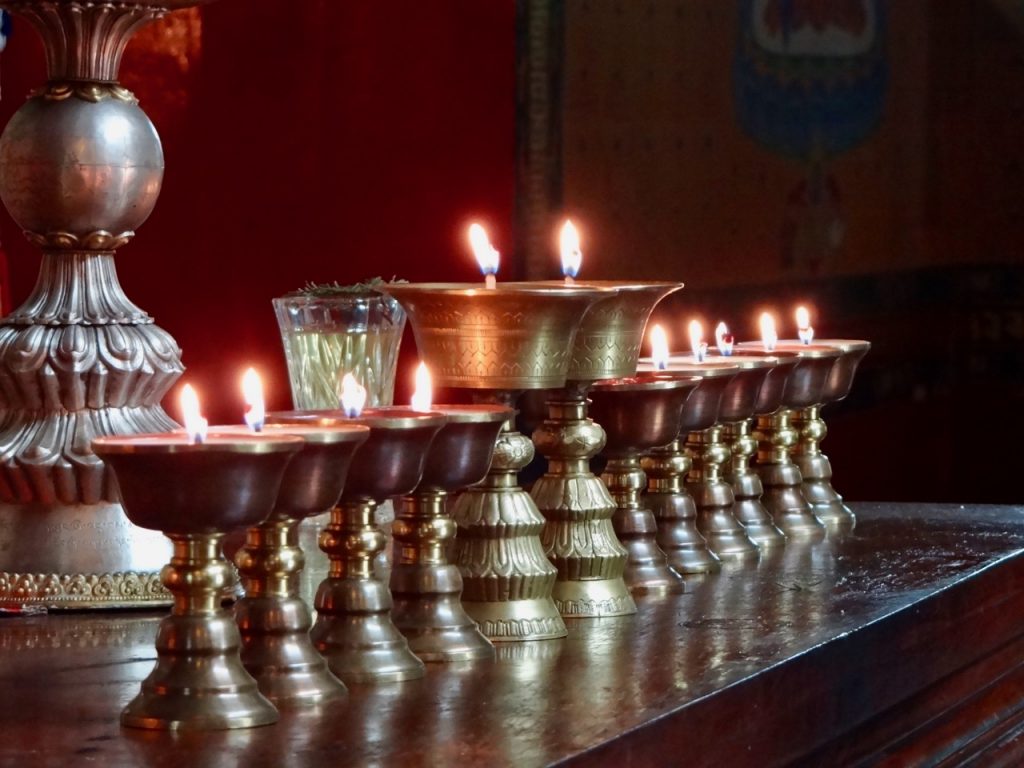
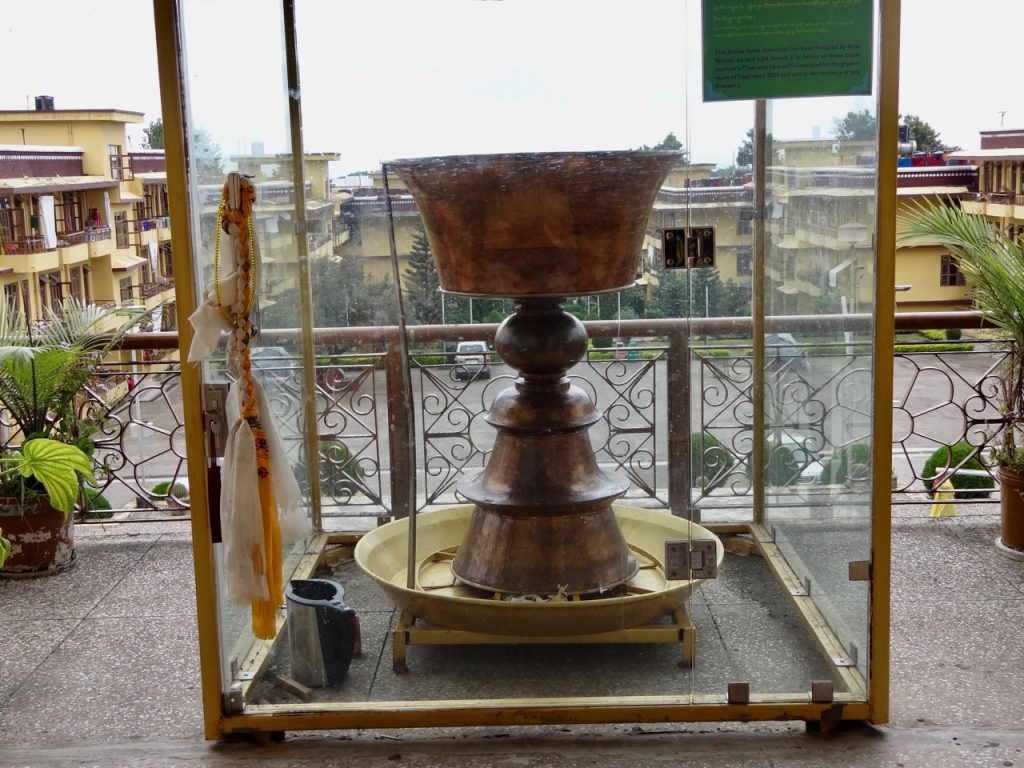
Gyuto Monastery
Set against the beautiful backdrop of Dhauladhars this tranquil monastery is the seat of Tantric Buddhism in India. Originally founded in 1474 in Tibet, it was re-established in Dharamshala after 1959.
This is one of the most serene and calm monasteries in the town. I think, its surroundings and spacious ambiance is something to do with it, besides, of course, the positive vibrations emanated by the lamas and their practices.
Location
Located on Sidhbari road this monastery is roughly 50 minutes of drive away from main Mcleodganj and half an hour away from Dharamshala
Observe and Learn
I visited this monastery around noon when it was lunchtime for the monks. It was a sight to behold – how the monks obtain and then enjoy their simple yet delicious meal of rice and curry.
Lunch is the most important meal of the day for monks because they do not consume any solid food post this meal. As they usually wake up very early, breakfast is usually served around 5 or 6 in the morning.
One of the monks I interacted with at this monastery explained to me the concept of ‘mindfulness’ as conceived by Buddhism and how one should enjoy every bite of their food and every element associated with it. It is something most of us have forgotten to do in this digitally-powered life.
The deity of this monastery is Sankhyamukhi Buddha. You must keep some extra time with you when you visit this place and try to spend some of it not just exploring the monastery but also to enjoy its serenity and if possible meditate.
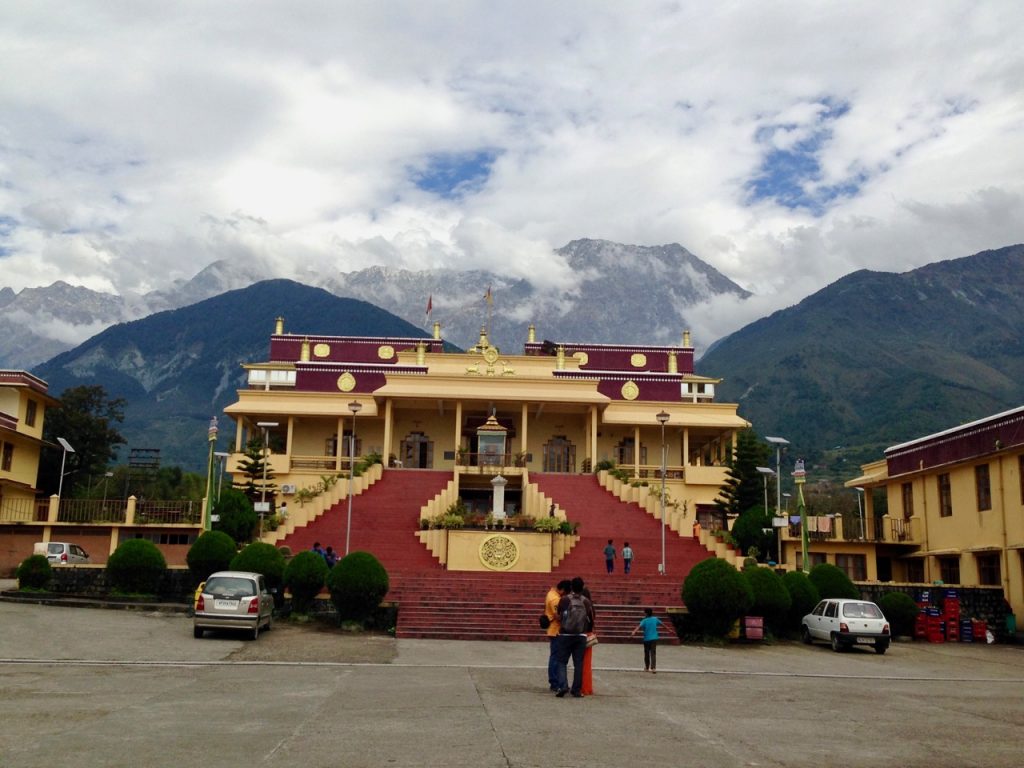

Norbulingka Institute
The explorer in me wanted to know and learn more about Tibetan culture and Buddhism, even after visiting these monasteries and after speaking with a few locals I discovered this beautiful place.
Location
Norbulingka has located on Dharamshala – Palampur road, roughly half an hour’s drive from Mcleodganj.
Must Not Miss
One of the best features of this institute is its in-house Cafe which serves delicious vegetarian Tibetan, Italian and select middle-eastern cuisine. The open-air garden cafe has a delightful setting of fluttering prayer flags and shady trees.
Trip Suggestion: Not planning a trip to Dharamshala, well you can also read about How to Plan a trip to Shimla and Manali?
Other interesting things
The architecture of this institute is purely Tibetan which is dotted with pretty Japanese style gardens and water streams. The stone building decorated with Tibetan art makes it look like mini-Tibet.
Those of you who would like a have slice of old-Tibet in terms of food, culture, and art must visit this little gem. A guide will assist you with the tour of the institute if you wish and will take you around the temple, museum and the shopping area in the premises.
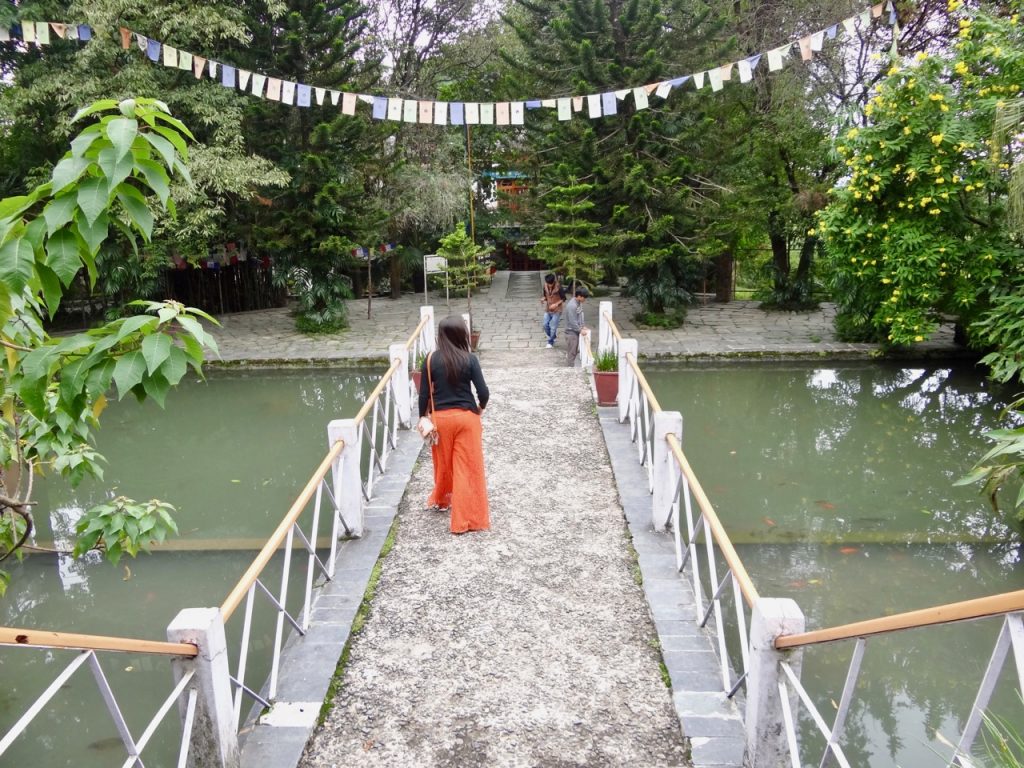
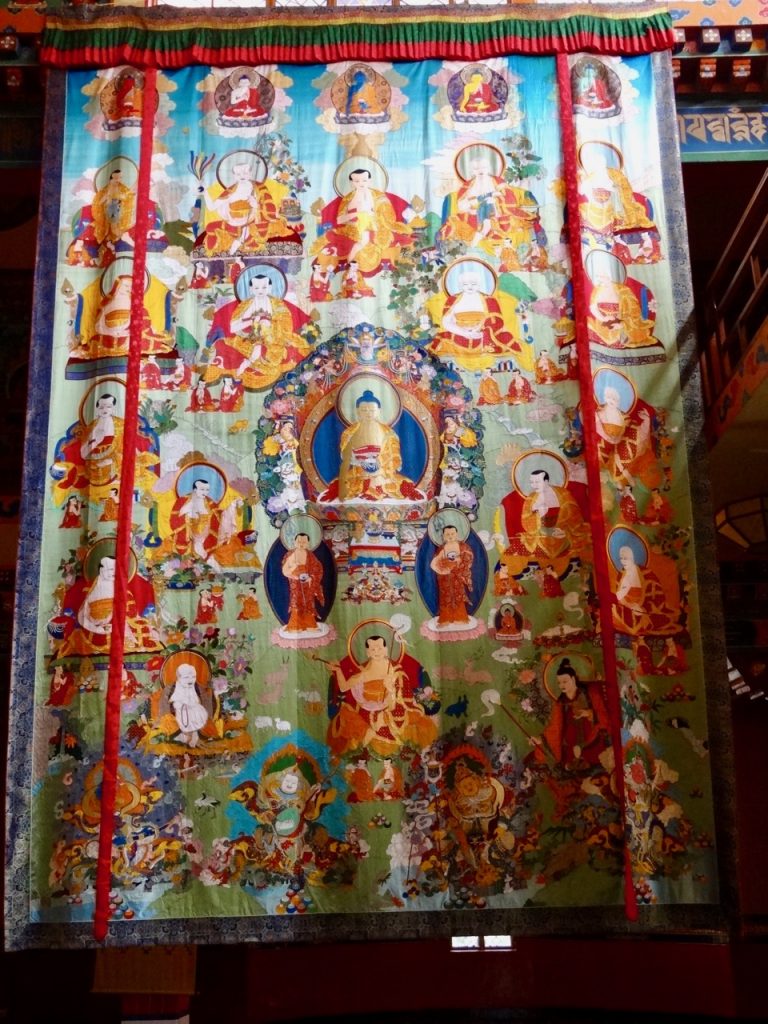

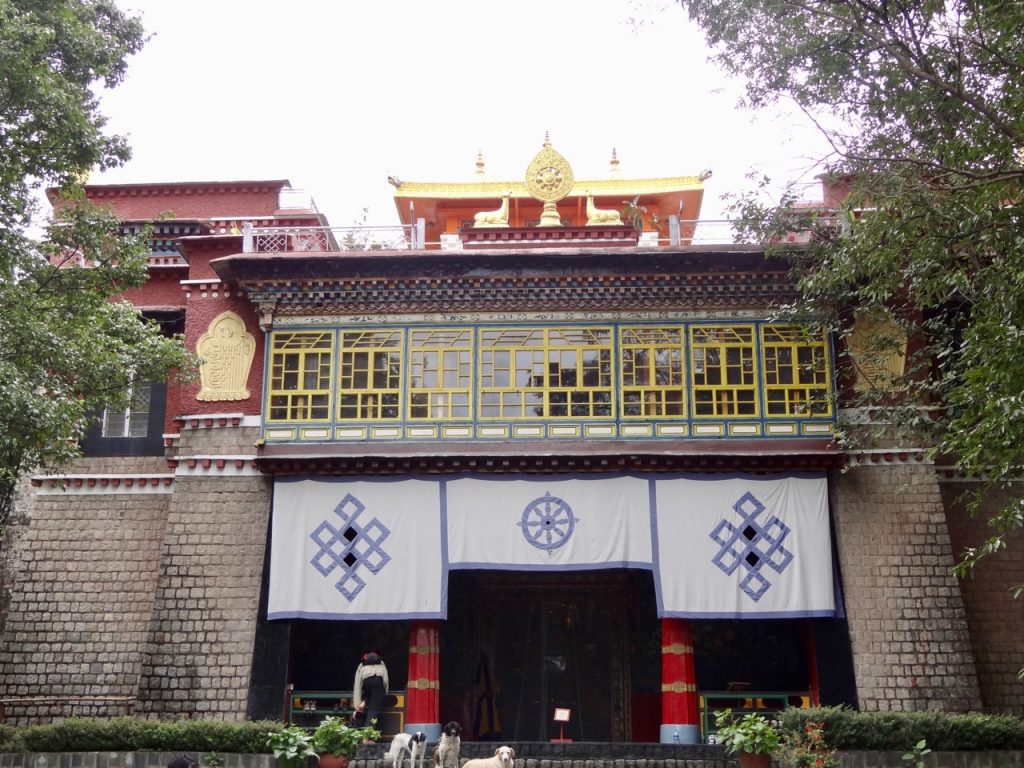
How to Behave in a Monastery
While monasteries in Dharamshala are welcoming to tourists, every religious establishment calls for respect for their sensitivities and culture. Here are some recommendations on what travelers should keep in mind while being at a monastery and while interacting with monks:
Do’s and Don’ts
Clothes – Although the climate in Dharamshala is cold most of the year, during summers it can be tempting to wear summer dresses or shorts. Ideally, one should be covered below knees and should wear simple well-covering clothes as a basic etiquette while visiting a monastery. Though not a rule, but it is good to cover your shoulders and display a modest body language.
Clicking Pictures – Monasteries are both a place of worship and a tourist attraction, which makes it difficult to balance the nature of these two facets. While travelers are tempted to click the place or record the proceedings, it is prohibited in many parts of most monasteries, especially inside the main prayer hall. Even if it is not explicitly instructed somewhere, one should be very mindful while indulging in photography and mustn’t disturb or disrespect monks or any religious rituals. Always seek permission before clicking pictures.
Respect – This general rule applies to every place of worship. However, I have seen many ignorant tourists climbing up the raised platform where Buddha statues are kept, or their children do so many times. It is utterly disrespectful; one shouldn’t even touch or sit near the main statue. Show respect to monks especially when they are in prayer or a religious discourse by keeping silence and bowing to them with folded hands, if you may.
What to carry inside
It is not allowed to take shoes, bags, and hats inside. They can be deposited at the lockers available near entry checks.
While mobile phones are allowed they must be in the silent mode to avoid causing disturbance to monks who are praying.
Sensitivities of monks
It is considered extremely rude to point your feet at any Buddhist, so while sitting near monks fold your feet and tuck them under your legs properly.
Abstinence is an important aspect of monks’ culture which prohibits them from directly contacting/touching women. Women visitors should keep this in mind and maintain a decent distance while interacting with monks. Some monks do not even accept anything directly from women. So while making an offering, it is best to request a male visitor or companion to hand it over to a monk.
While starting a conversation with a monk, it is respectful to sit at the same level as his. Don’t keep standing while a monk is sitting and start talking to him.
Peace and serenity are all around you when you visit a monastery because the residents (monks) are either mostly busy with studying religious texts or performing rituals. Maintain a general posture of silence and modesty to avoid disrupting their work.
Things To Do And Expected Takeaways From Your Visit
While there are some unique things to each of the monasteries in Dharamshala there are some common takeaways and learnings you can bring home with yourself that will make you relive the same experience again:
Churning of Prayer Wheels
It is said that the mantras written on prayer wheels are released into the air for the benefit of all sentient beings when those wheels are rotated. The more these wheels are rotated, the more blessings will be bestowed upon humanity. For non-believers, rotating prayer wheels could be a fun activity as well, if done respectfully and in the right manner (rotate clockwise).
Expert Travel Tip: Did you know that Dharamshala is one of the Top 15 Honeymoon Destinations in Himachal Pradesh 🙂 🙂
Meditation
Not all travelers aim for this or can afford to this in the limited amount of time they allocate for sightseeing. However, I request the readers of this blog to keep some extra time and try sitting with your eyes closed inside a monastery, if not meditate. Everyone has a unique and personal experience while meditating, but the calm of these places grow on you, and you feel it within yourself. Give it a try!
Learning about Buddhism
If you wish to, a lot can be learned about Buddhism and its practices while interacting with the monks or reading the information put up around the monasteries.
Learning about the Tibet cause
Dharamshala and Mcleodganj became popular, and a melting pot of cultures only after the Dalai Lama, along with Tibetan refugees settled here and made this place their temporary home. Dharamshala today gets its identity from these Tibetan people. Extensive information is available at Tibet museum about why these people were forced to flee their country by the Chinese and what is their fight for.
Observe the humble lifestyle of lamas
Some of the things that I learned from my visits to Dharamshala about monastic lifestyles are very humbling. Their simplistic lifestyle teaches us that even in today’s world, we can live with humility and be content. Things like their food habits, restraint on senses, their approach of mindfulness make you learn how to appreciate and enjoy the simplest pleasures of life. Trust me; it is worth a shot!
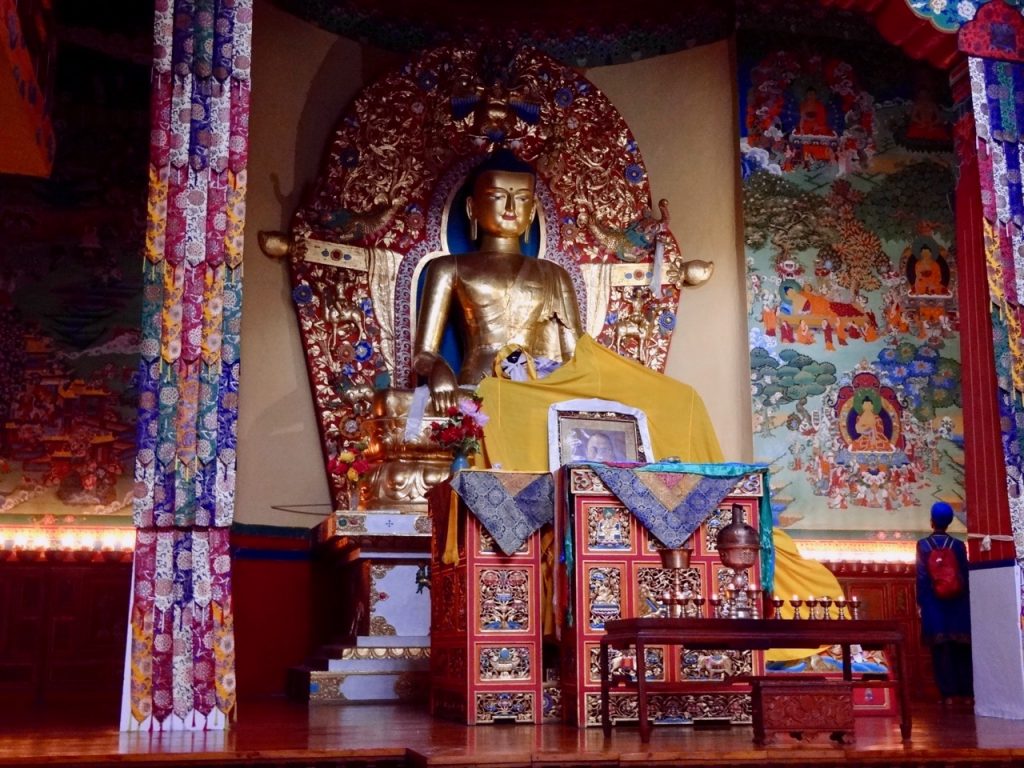

Conclusion
I hope this article on monasteries in Dharamshala will help you plan a trip in search of peace, solitude, and minimalism. In the end, I will request you to be sensitive to the environment, the Buddhist culture, and abide by the rules of visiting monasteries anywhere in the Himalayas. You will not be disappointed by witnessing the calmness and aura in the air around these monasteries in Dharamshala.
Have a travel question?? You can follow me on Instagram and subscribe to my YouTube channel to ask your travel questions in a direct message on Instagram or comment on my YouTube videos.
Do you still have any questions or suggestions or need any help in planning your trip to Dharamshala or Mcleod Ganj? If yes, please feel free to post them either in the comments section of this article below. You can also take guidance from many travel experts in our DwD Community Forums and discuss your upcoming travel plans for Dharamshala 🙂
If you like the article, please feel free to share it with any of your family or friends who are planning a trip to Dharamshala. In the next article of the series, I am going to talk about traveling to Dharamshala in detail.
Now if you are in need of peace and solitude, then don’t wait and waste more time rather step out to visit these enchanting places in the Dhauladhar Himalayas.






2 Comments
Comments section gets closed in 90 days. To ask your travel questions, you can follow my YouTube Channel for a faster reply or for a much slower reply follow me on Instagram. :)
Hi Anne, consider attires which cover your shoulders and legs (at least below knees). You can even try some Indian outfits – Kurta with salwar, palazzo pants or even pair it with denims.
There’s no rule of wearing a particular attire at monasteries for laymen, but being dressed in a proper way is respectful to the monastic culture.
Hope this helps. Sorry for the delay in replying.
I found this really interesting. I will be there in about a months time and am wondering what dress code should be for women visiting the monastery?
Many thanks
Anne